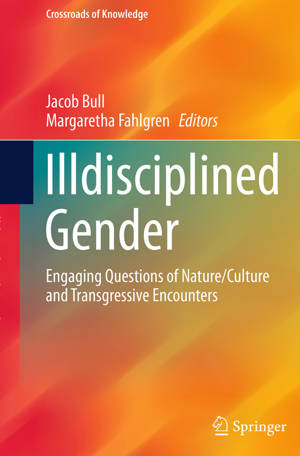
- Afhalen na 1 uur in een winkel met voorraad
- Gratis thuislevering in België vanaf € 30
- Ruim aanbod met 7 miljoen producten
- Afhalen na 1 uur in een winkel met voorraad
- Gratis thuislevering in België vanaf € 30
- Ruim aanbod met 7 miljoen producten
Zoeken
Illdisciplined Gender
Engaging Questions of Nature/Culture and Transgressive Encounters
€ 52,95
+ 105 punten
Omschrijving
This volume offers some of the outputs, challenges and opportunities created in an interdisciplinary programme that was set up to engage multi-, inter- and transdisciplinary perspectives on issues at the intersections of nature and culture, sex and gender. When working with mass spectrometers, microscopes, discourse analysis or interviews, one rarely has to explain them to colleagues. They are the tools used. But when working in inter- or transdisciplinary settings, such tools require explanations. These conversations make evident that trans and interdisciplinary (gender) research is a not just a novelty requiring an adjectival prefix 'trans-' or 'inter-', it is something done, performed, practiced. Moreover it is something done in particular spaces, a consequence of particular meetings - transgressive encounters. This collection is built on work conducted under the GenNa: Nature/Culture and Transgressive Encounters Research Programme, funded by the Swedish research council. It brings together a range of scholars from the humanities, natural, physical, life, and social sciences by so doing it reflects on the challenges, risks and opportunities of doing trans- and interdisciplinary work. The result is a collection that uses a multitude of tools to examine issues such as sexual difference, hydro power exploitation, research seminars, dairy farming, the spaces between molecules, film and identity. They are witness to the diversity created through transgressive encounters and illustrations of doing inter- and transdisciplinary research.
Specificaties
Betrokkenen
- Uitgeverij:
Inhoud
- Aantal bladzijden:
- 159
- Taal:
- Engels
- Reeks:
Eigenschappen
- Productcode (EAN):
- 9783319366722
- Verschijningsdatum:
- 23/08/2016
- Uitvoering:
- Paperback
- Formaat:
- Trade paperback (VS)
- Afmetingen:
- 156 mm x 234 mm
- Gewicht:
- 249 g

Alleen bij Standaard Boekhandel
+ 105 punten op je klantenkaart van Standaard Boekhandel
Beoordelingen
We publiceren alleen reviews die voldoen aan de voorwaarden voor reviews. Bekijk onze voorwaarden voor reviews.










